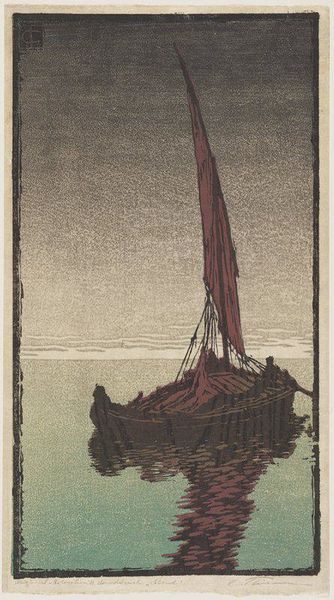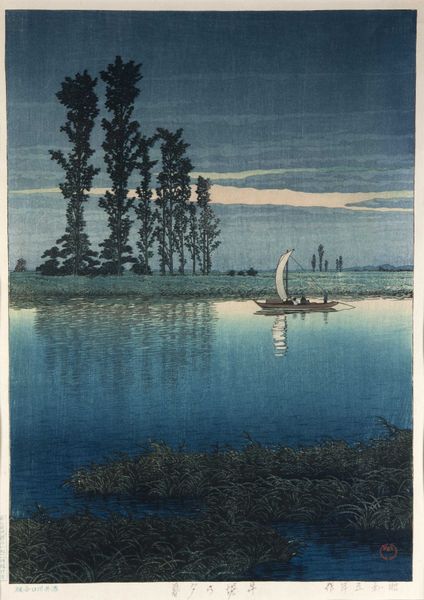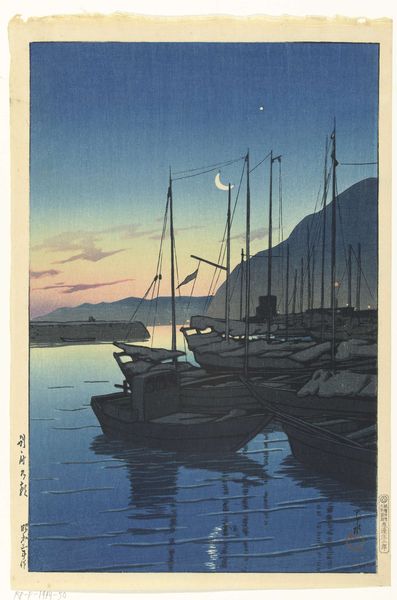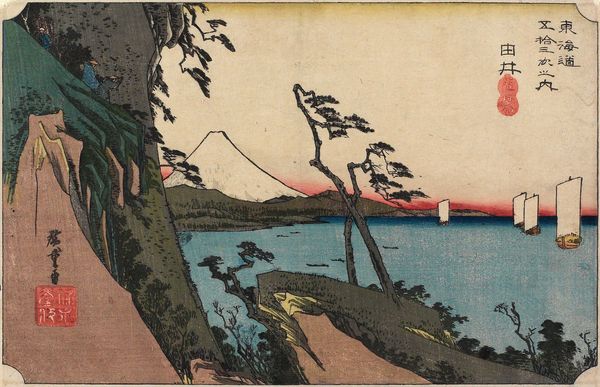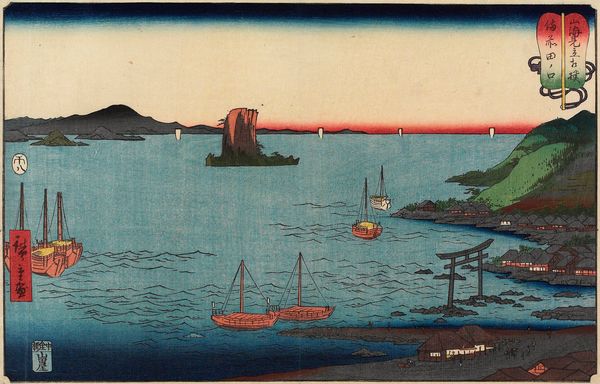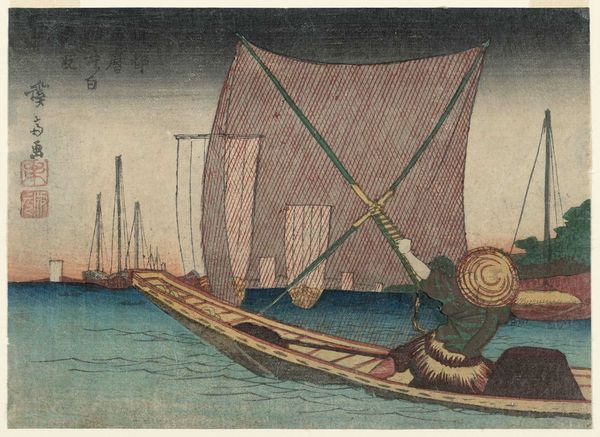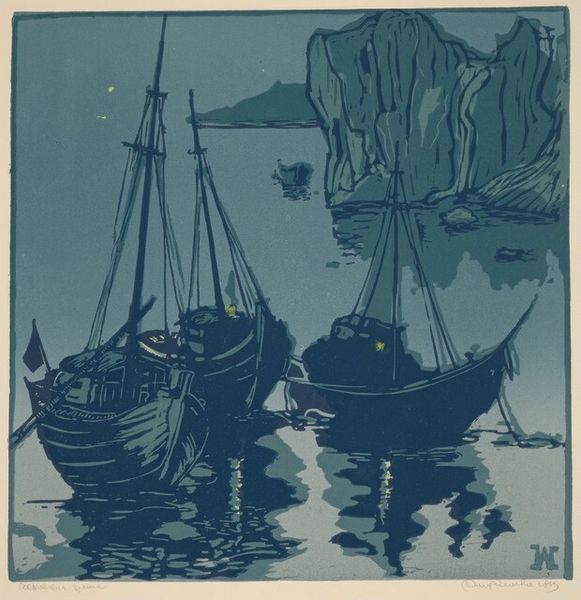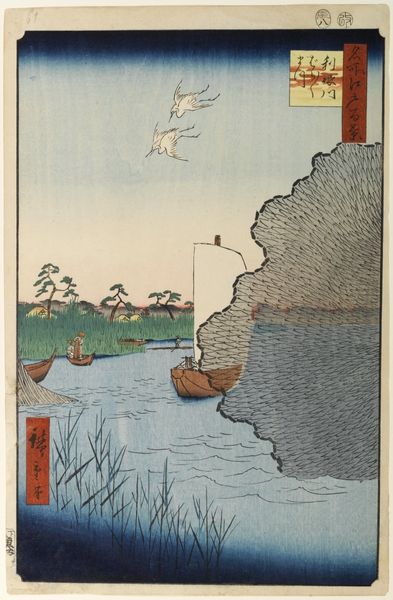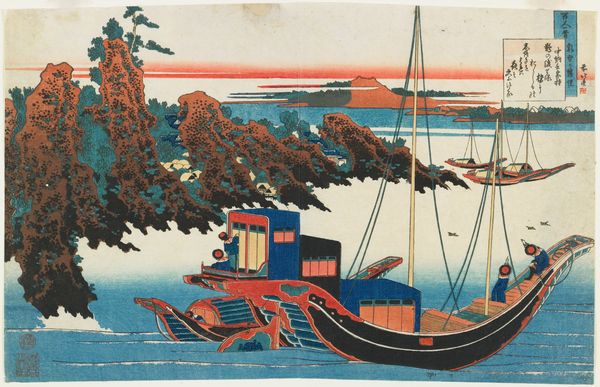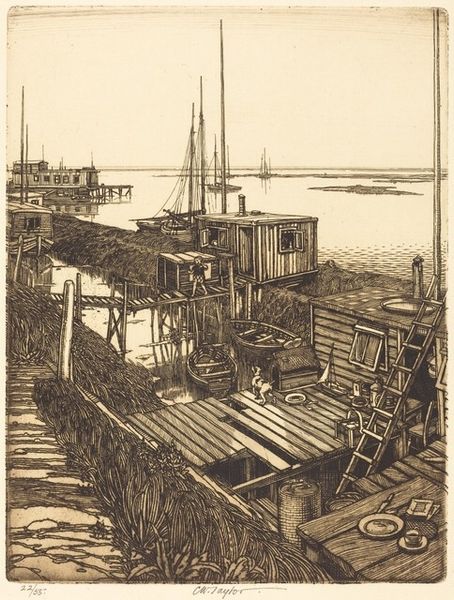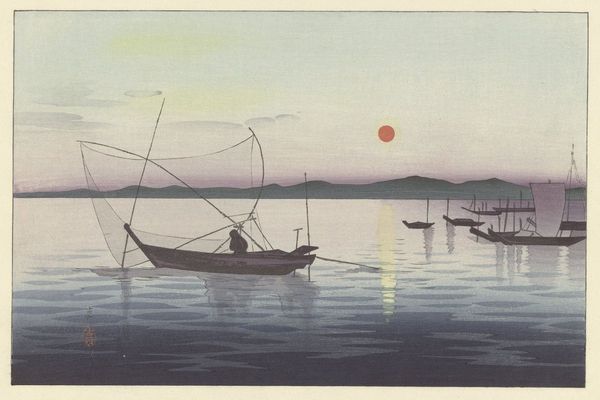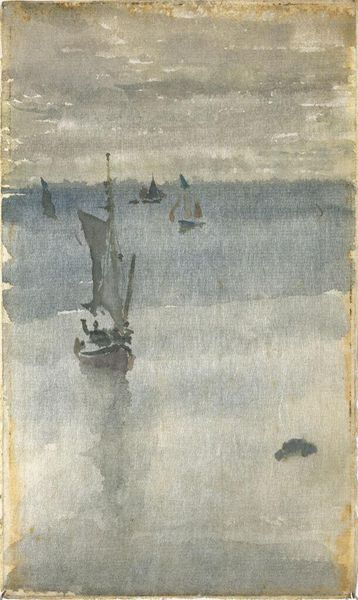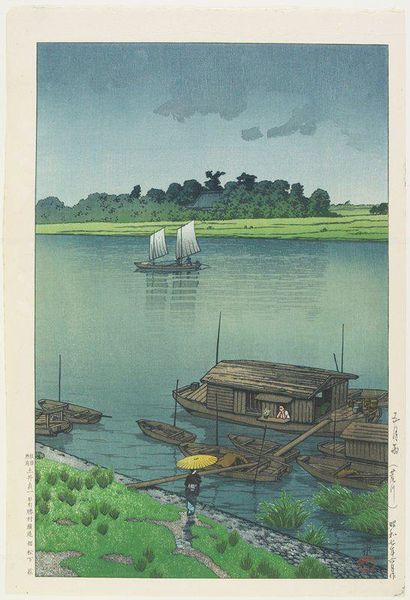
Copyright: Public domain Japan
Curator: This print, entitled "Hayama, Iyo", was created by Hasui Kawase in 1934. The chosen medium here is a woodblock print, heightened with watercolour. Editor: I'm immediately struck by the stillness, that almost eerie calm hanging in the air, reflected in the water. The composition has an arresting sense of depth. Curator: Indeed. Kawase, a master of the *ukiyo-e* tradition, evokes a palpable sense of atmosphere, achieved through incredibly meticulous carving and printing processes. Notice the subtle gradations of colour – likely achieved through multiple block impressions – and the exquisite key lines which denote form. The layering and expert application of watercolor gives such depth to what otherwise would be a flat space. Editor: And it's precisely this tension between flat pictorial space and almost photorealistic detailing that lends this work its haunting power. I see echoes of *Japonisme* in his romantic treatment of light, particularly as that aesthetic movement was adopted by galleries looking to engage western audiences at the turn of the century. The scenes feel inherently commercial even while being "Japanese" or what was understood by those international viewers to be. Curator: It is worth considering the artist's context, though, isn't it? As a *shin-hanga* artist, Kawase wasn't just replicating *ukiyo-e*, he was reimagining it. These prints were collaborative endeavors, involving not just the artist, but also block carvers and printers, highlighting an entire system of skilled craftspeople contributing to these final designs which also helped preserve older print making techniques and skills as well as giving income to Japanese people even through trade outside of Japan. Editor: That speaks to a broader art historical context, right? The rising interest in so-called “traditional” crafts coincided with—and was deeply shaped by—the rise of consumer culture, where artwork serves to validate both artist and institution involved. Museums can leverage works like "Hayama, Iyo" to reaffirm an interest in classical arts from Japan to solidify continued collaboration and potential funding from stakeholders. The question is how this is portrayed by us, within this exhibit. Curator: Perhaps, by showcasing not just the aesthetic qualities, but also unpacking the process, we can offer viewers a more holistic understanding of this piece. Editor: I agree. Understanding the mechanics by which it was produced also gives further context to this specific piece as it relates to art production from around the world at the same time, not just what one would traditionally deem as art from Japan. Curator: Exactly.
Comments
No comments
Be the first to comment and join the conversation on the ultimate creative platform.
